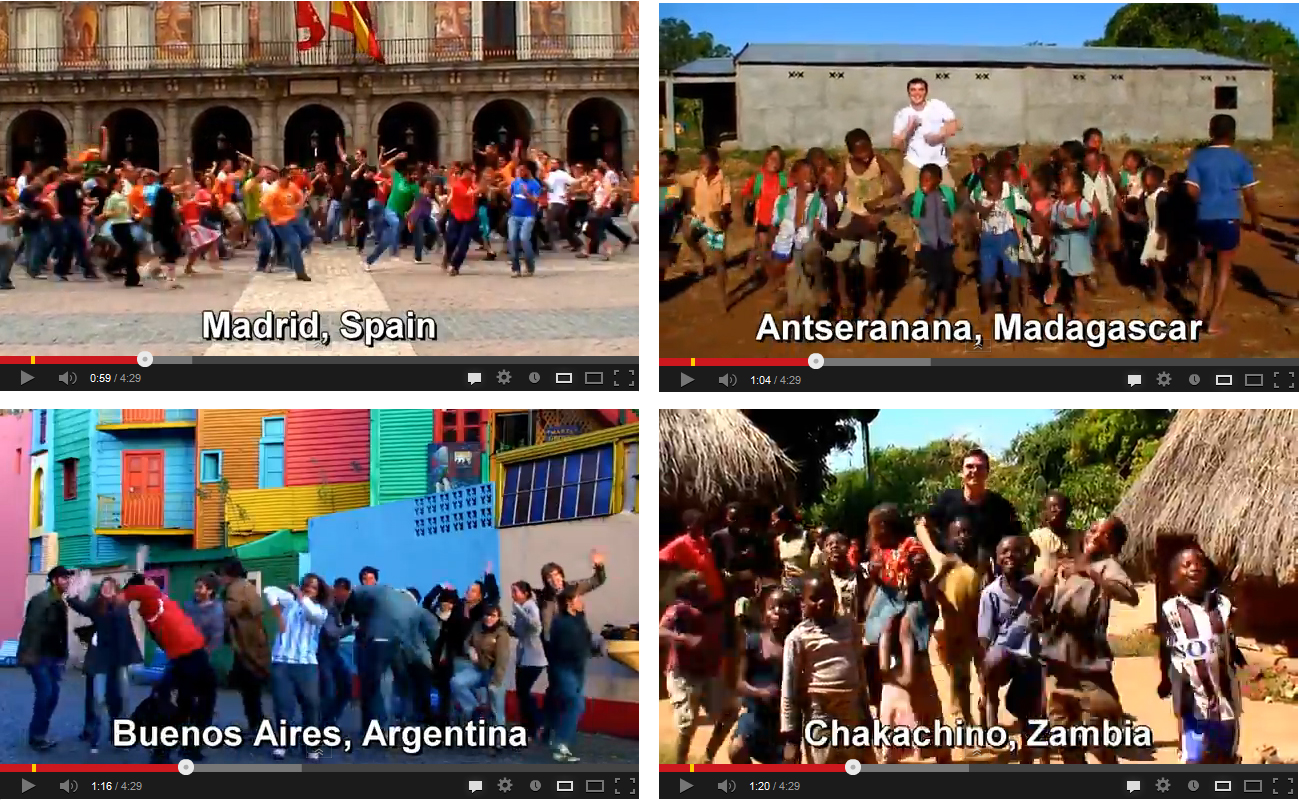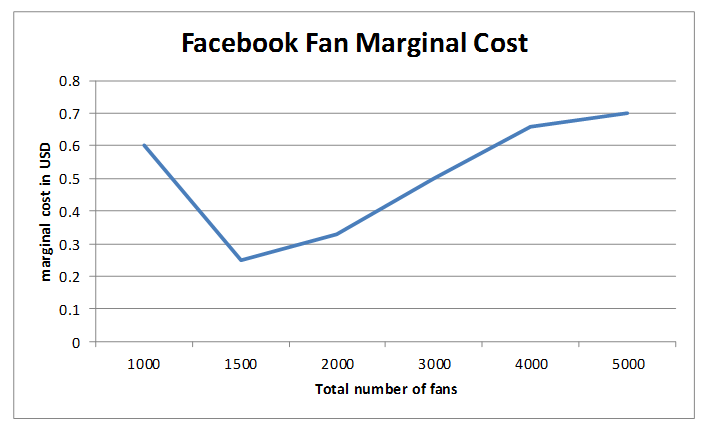Online Social Networks (OSN) are the new trend in marketing. Every business wants to be on Facebook but it all seems to be revolving around a single variable, the number of fans. The number of fans – even fake ones – seems to arouse entrepreneurs and business man and give them a (false) feeling of success. Reality is that virtual fans don’t always make real customers and there is more to social media than a fan count.
1. Likes and Customers
The first and most common mistake an entrepreneur could made is confuse fans (likes) with customers. Research has shown that, on the personal level, the number of friends has a positive association with the feeling of well-being. This is why most people tend to increase their online social capital by adding acquaintances and even relative (or complete) strangers as friends. Yet, the same studies show that online popularity does not translate to a better status IRL (in real life). Managers are falling into the same trap and online media salespersons are luring them with fan counts and “virtual” fame. Terms like “brand awareness”, “virality”, “e-WOM” (electronic word of mouth), SMM (Social Media Marketing), etc., are carefully used as decoys to prevent the manager from seeing the real problem at hand: how to increase the number of offline customers.
Simply put: Fans are a liability, customers an asset. All fans are not customers! If you don’t have your figures right, you may end up paying for the illusion of fame without any return on investment. As your online social network evolves towards an “unnatural” mix of people, its attraction to real customers will decrease and the system will probably backfire at some point.
Moreover, recent studies show that, as the number of fans increases, their engagement diminishes. This can be explained by the difference in nature between small groups (elite groups, strong ties, high centrality, high density, etc.) and very large groups (low density, heterogeneous community, etc.).
2. Value of fans
The second common OSN mistake is thinking that “all fans are equal”. This is definitely not true. In sociometric terms, fans can be hubs, bridges or fringes. Hubs are highly connected people within your network. When a hub comments or likes, dozens of people are immediately notified by Facebook. Bridges are links between your network and other networks. Fringes are the extremities of your own network. They are hard to reach.
Sociometry also offers other metrics like centrality that will help you understand the flow of information and the importance of each individual fan, independently, within your network.
Any serious OSN strategy should focus on targeting one or the other type of fans using proper methods and strategies for each different type. For instance, a politician would target bridges between his network and his adversary’s network to convert people from the other network to his side. A company, on the other hand, could decide to target hubs when announcing a promotion for regular customers or fringes when trying to expand its customer base.
Moreover, your initial group of fans (initial seeding population) is the cornerstone of your online presence: choose the right fans to start with and your network will grow naturally and efficiently; start with the wrong fans and your mess will be harder and harder to clean as your (unwanted) fans count grows.
Strategists also talk about “influencers” and “super-fans” because it often takes one fan to make or break a brand.
3. Fake likes
The industry of fake fans is rapidly growing with new services like fake posts and fake comments as additional services. A recent article talks about 40% of fake fans for French artists and politicians. With or without notifying the customer, some social media services companies will buy packets of fans either to lure the client or customers and real fans.
Of all the bad online strategies, this is undeniably the worst:
– There are several methods to detect a fake population, especially when you try to exceed your fan base beyond any logic. One of the ways to detect this is through last week’s “most popular city”, a metric available to any fan. The reason is that fake fan don’t always match your default customer profile (gender, country, age). So, if you’re a Lebanese company trying to buy tens or hundreds of thousands of friends at a good price, you’ll probably end up buying Egyptian, Iraki or far-east fans.

Other methods can also be used to verify the authenticity and origin of fans using the new Graph Search, for example: “Fans of a-Facebook-page who live in Iraq”.

– When you post information on your page or profile, Facebook transmits it to 13 to 17% of your fans (empirical statistics), sometimes less. If half of your population is fake, this is approximately half your reach going to waste. If you’re paying to boost (promote) your posts, this is half of your money gone.
– All your metrics and statistics will be biased and any future communication strategy will be based on erroneous estimations.
– The maintenance cost of a fake fan is exactly the same as a real fan minus the benefits.
4. Virality & Frequency
The most ridiculous and recurring advice managers hear and follow is: “publish more posts to attract more fans”. Of course, the statement is carefully loaded with the usual flashy social media talk: “virality”, “awareness”, etc.
This urban OSN legend about frequency and success has made its way throughout social networks: business men think or are often advised to post more frequently to increase virality and attract more fans. In fact, more posts are an increasing “unlike” risk. People get bored, see this as harassment. In short, they don’t want to hear about their favorite brand every day but only when it counts.
Frequency is a very delicate matter. It’s easy to determine the right amount of posts for a blog or a website because your main objective is to get noticed by Google and people come to you when they need to (Google search), not the other way round (Facebook newsfeed).
Virality is not linked to frequency. If you manage to create a viral post, you won’t need to post another one as long as the contagion is increasing. If you post a video and it starts spreading at the rate of 1,000 views per day, your smartest move would be to promote it more, not to post other information. With its “KONY 2012” video, Invisible Children inc. reached more than 97 million people worldwide and mobilized thousands of people AFK (away from keyboard). The same can be said about Matt Harding with his series (one video every 2-4 years): “where in the world is Matt?”

As a business example, with its crazy idea of blending everything on video (iPhones, iPads, marbles, golf balls, even CDs of Justin Bieber, etc.), Blentec became the most notorious manufacturer of blenders worldwide.
The main idea is to prioritize quality over quantity. People have a limited time to spend on Facebook every day. They need their timeline to be neat and interesting. If they get ten posts from the same company every week, chances are they will unlike the page. Avoid the usual “hello world”, “trivia quiz”, “quote of the day”, “funniest joke”, “TGIF”, and other completely irrelevant posts, you don’t want fans liking you because you’re funny, you want them to like you because you’re funny – or not – AND because your product is something they will like and buy.
In short, frequency is important but should be combined to quality: if you have nothing smart to say, say nothing.
5. What is the cost of fans?
The fifth mistake is underestimating or overestimating your costs. It is important for an entrepreneur to know what are the different costs at hand:
– Strategy: This is the building of the action plan. Usually handled by a consultant or a specialist. Prices vary depending on the person or company’s qualification.
– Content creation: this is the creation of text, photos, videos based on the strategy. Prices vary depending on the person or company’s qualification and the type (text, video, photos) and number of posts to be created.
– Fake fans: the cost for fake fans (not recommended) starts at around $8 for each 1,000 fake fans. Depending on the nationality of the fake fans, prices can climb up to around $17 or $20 per 1,000 fans.
– Real fans: the average cost for real fans, based on statistics, varies from $0.5 to $2. This includes any type of Facebook advertising or promotion used. Of course, cost will vary over time. Based on experience, the marginal cost for a fan (cost for every additional fan) will decrease when you start your campaign (first few thousands likes) and then increase as you try to get more and more fans.

6. Reach and dispersion
One metric that is often disregarded is the reach. Basically, when you post information, you can reach fans, friends of fans, friends of friends of fans, etc., to the nth degree. Basically, you can have 1,000 fans and reach 50,000 people or a million depending on the heterogeneity of your network, on the virality of your message and on your post promotions (ads).
There are three types of reach:
– Organic: Facebook will display your post, free of charge, in average, to 10 to 17% (based on statistics) of your fans.
– Viral: if these fans like or comment your post, 10 to 17% of their friends are informed, and so forth. This is also free.
– Paid: You can “pay” Facebook to boost your post (pay for additional organic reach by displaying your post to more fans and friends of fans) or target a broader range of people related or unrelated to you (by country, age, sex, interest, etc.) using other types of Facebook ads.
It is important to mention that, if your network is composed of, let’s say, 50% of fake fans, a corresponding amount of messages will be propagated to these fake fans and thus lost in cyberspace with no ROI. This is why it is important for a business to think about his online social capital not as a total of likes but as a group of individual fans, customers, influencers, advocates, etc.
Conclusion
The difference between fans and customers is huge. Yet, most of the time, managers fail to see it. By experience, I saw companies forced to increase their prices to cover the expenses incurred on Facebook to grow and maintain their Facebook fan base.
Ask yourself how come you have tens of thousands of fans on Facebook and only a few hundreds buying from your store. Ask yourself how you’re going to cover for the expenses of a Facebook fan campaign if your product’s price is 1$. Ask yourself if your strategy is bringing customers to your shop, not fans to your Facebook page. Ask yourself what is the formula to translate virtual fans into real customers knocking on your door…
Before going social, ask yourself the traditional, old fashioned, down-to-earth questions that count.